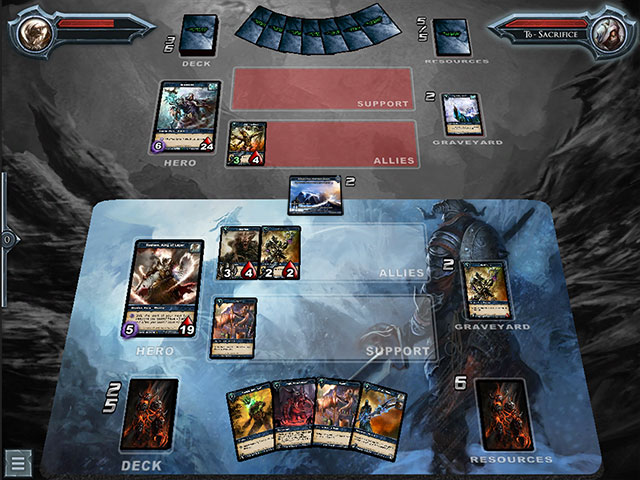In case you missed the first revealed Location from that announcement, or simply need a reminder, here it is again:

It was great to see so much excitement and speculation about how our new card type will work, just from that one spoiler, but now it's time to hopefully remove the speculation and increase the excitement, with the full rules for Locations and three new spoilers!
Location Deckbuilding
Location cards go in your deck. You can choose to run no Locations at all or up to 4 of each.
Part 1 of Lost Lands will include 15 Locations. The complete 200-card set will have 20 Locations in total.
Location Location (Location)
Locations are played in the centre of the board between the two ally rows, in a single stack, shared between all players.

All Locations in the stack are considered in play, but only the top one is active, meaning that the text on all the covered Locations is effectively blank.
When a Location is summoned while there is already an active Location, the active Location immediately becomes inactive and the newly summoned Location takes its place on the top of the stack as the active Location.
Location Summoning
Locations have no summoning cost, so they effectively play for "free" (even in presence of cards that increase summoning cost).
Locations always have a Turn Number associated with them, which denotes the earliest that the Location can be summoned. In other words, for a Location to be summoned, the current turn number for the active player must at least match the Turn Number on the Location (e.g. T2 means the active player must be on their 2nd turn or later).
A player may not summon more than one Location per turn.
To help players adhere to these two requirements, within the digital game, a Location card will not be highlighted in your hand before its Turn Number requirement has been met or if you have already summoned a Location that turn.
A player may add a new Location to the stack even if their own is currently on top.
A player may summon a Location even if another copy of that Location is currently on top unless that player controls and owns the active Location. (In play-testing and earlier versions of the live game, we allowed players to summon a second copy of a Location directly over their first copy of that Location, but this proved to be too limiting on the effects we could put on the Locations without them being broken/OP.)
Location Abilities
Locations have two separate ability text boxes, with each considered speaking to the player it is closest to (or the team it is closest to, in the case of 2 vs 2 play). Text for the opposing player(s) is written "upside down" to facilitate this.
Each ability text box can have passive abilities and/or activated abilities.

Each activated ability on a Location can only be activated once per turn.
(Locations therefore function a lot like summoning a pair of items, one for each player, with a single card, but also like weapons such that each successive Location cancels the previous.)
Location Control
As with every other card in Shadow Era, each Location has exactly one controller at all times, which is the player who summoned it by default.
Some Locations have built-in effects for the opponent to take control of the Location. This causes the Location to rotate, switching the abilities on offer to each player.
If you take control of a Location on your turn, you may still activate the controller ability even if you have already activated the non-controller ability.
A single Location can repeatedly change control throughout the game.
If some effect causes the top Location to leave play, the next Location in the stack becomes active again, with the same controller as it had when it was covered.




 Sections
Sections



vBulletin Message